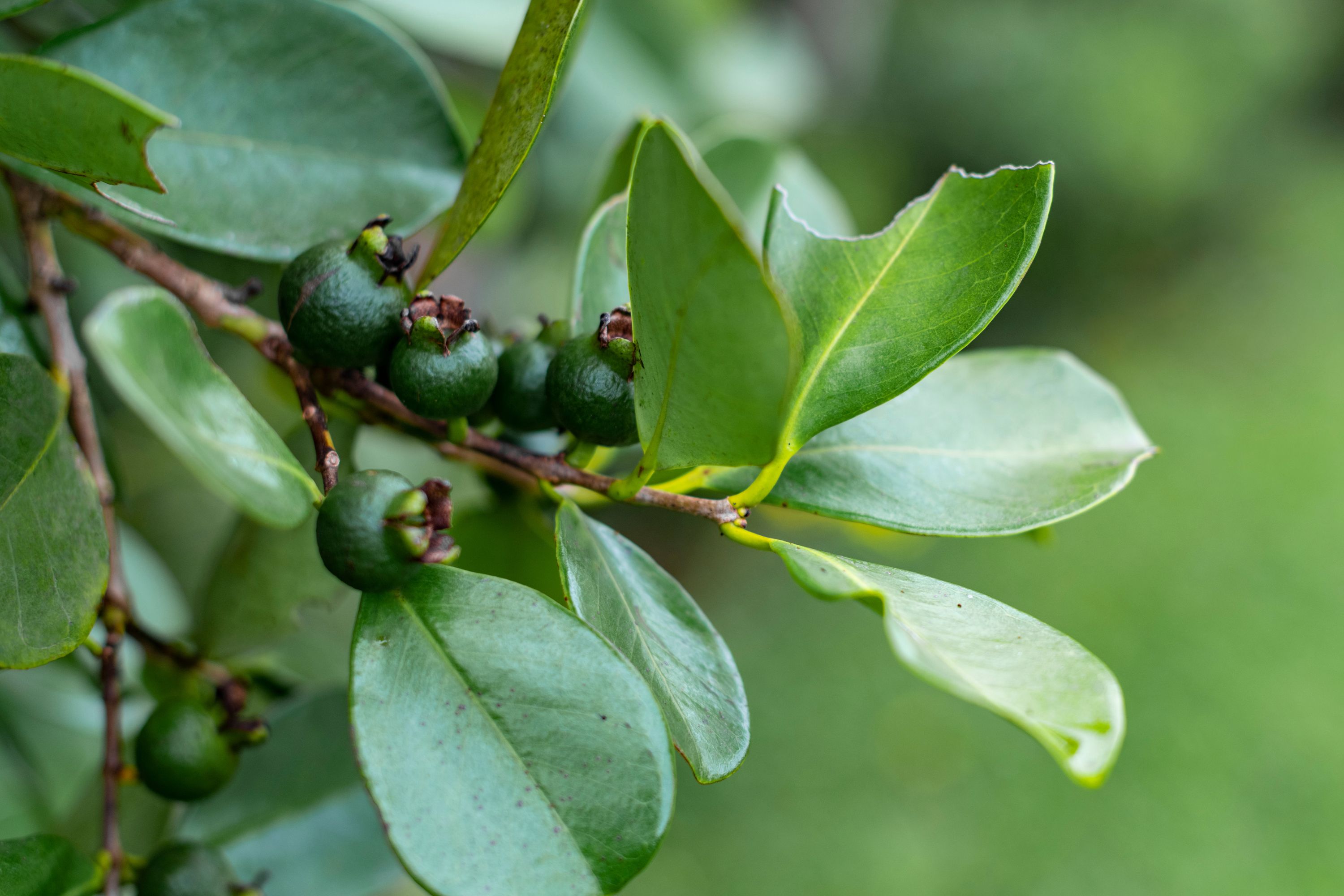Cattley guava
(Psidium cattleyanum)

Description
Psidium cattleyanum (World Plants: Psidium cattleianum), commonly known as Cattley guava, strawberry guava or cherry guava, is a small tree (2–6 m tall) in the Myrtaceae (myrtle) family. The species is named in honour of English horticulturist William Cattley. Its genus name Psidium comes from the Latin psidion, or "armlet." The red-fruited variety, P. cattleyanum var. cattleyanum, is commonly known as purple guava, red cattley guava, red strawberry guava and red cherry guava. The yellow-fruited variety, P. cattleyanum var. littorale is variously known as yellow cattley guava, yellow strawberry guava, yellow cherry guava, lemon guava and in Hawaii as waiawī. Although P. cattleyanum has select economic uses, it is considered the most invasive plant in Hawaii. Psidium cattleyanum is a small, highly-branched tree that reaches a maximum height of 13 meters, although most individuals are between 2 and 4m. P. cattleyanum has smooth, grey to reddish-brown bark, with oval to elliptical leaves that grow to 4.5 cm in length. It bears fruit when the plants are between 3 and 6 years old. This fruit has thin skin that ranges from yellow to a dark red or purple, is ovular in shape, and grows to around 4 cm in length. Its flowers grow either individually or in clusters of three, and each flower has five petals. P. cattleyanum reproduces through setting seed and through cloning. Clonally produced suckers tend to have a greater leaf area. Though native to Brazil, it is now distributed throughout many tropical regions. It was introduced in Hawaii as early as 1825 to create an agricultural market for its fruits, but it has yet to be a commercially viable product. It is now highly prevalent in tropical rain forest ecosystems due mainly to accidental transportation and its invasive plant properties. P. cattleyanum has modest economic impacts in Hawaii due to its edible fruits and beads that are made by tying individual fruits together. However, products made from P. cattleyanum are not commercially available because of a lack of market and the heavy presence of fruit flies. This renders the fruits inedible soon after they are picked. Additionally, its seeds have many health benefits, including antioxidant, anti-inflammatory, and antimicrobial properties in addition to a high amount of Vitamin C.
Taxonomic tree:







